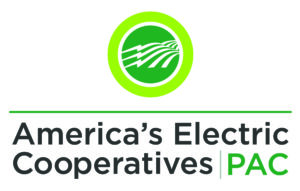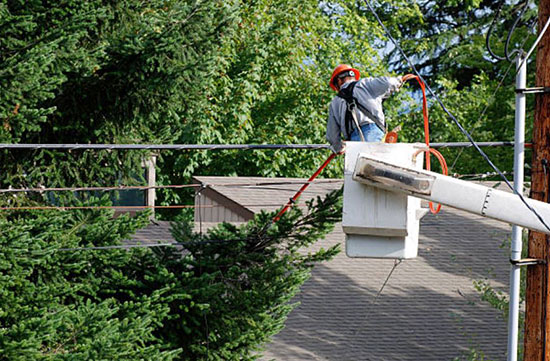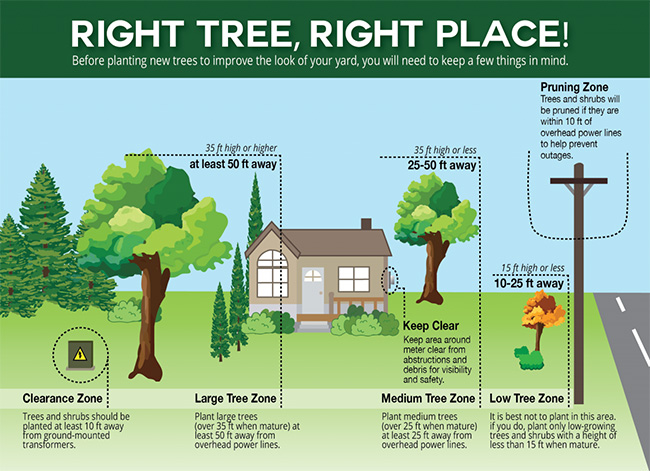General Information
We have a variety of programs to benefit YOU—the member. Find out more below on the all the programs that are offered at Great Lakes Energy.
Electric Cooperative Advocacy
More than ever, electric cooperatives need their members’ support on important energy policy issues.
You can help make a difference in shaping the future of America’s electric co-ops and the communities we serve. There are exciting opportunities for you to join other co-op members and support efforts to achieve legislative and regulatory outcomes that positively impact electric cooperatives and the communities they serve.
Three ways you can show support:
1. America’s Electric Cooperatives PAC (formerly known as ACRE)
PAC is a political action committee that supports members of Congress who understand the issues affecting rural electric cooperatives and will advocate for co-op members. Funds raised by this grassroots network are non-partisan and donated to the political campaigns of candidates whose positions on issues support those of electric cooperatives.
For more information, email us at [email protected].

2. Co-ops Vote
Co-ops Vote is a non-partisan project of America’s Electric Cooperatives designed to inform its members on the key issues facing electric co-ops and encourage them to vote and support their co-ops and the communities they serve when they go to the polls.
To learn more about it means to be a co-op voter and upcoming elections, visit vote.coop.
3. Voices for Cooperative Power
Voices for Cooperative (VCP) is a network of electric co-op members working together to influence elected officials who are making energy policy decisions that impact our electric co-ops and, by extension, our way of life.
Now more than ever, we need to make our voices heard in conversations about energy policies that impact not only our electric co-ops, but the communities we call home.
To learn more about VCP and sign up, visit voicesforcooperativepower.com.
Vegetation Management
The ability to provide reliable electric service along with the safety of our employees and members are very important to Great Lakes Energy. In order to achieve both, we must maintain our equipment and power line rights-of-way through a variety of practices, including vegetation management. View our Vegetation Management brochure for more information.
Trees are the most common cause of power outages for Great Lakes Energy members. To achieve greater reliability for our members, our Vegetation Management department performs routine maintenance of trees and other vegetation on more than 12,000 miles of overhead lines.

Routine vegetation management activities are completed on a regular cycle of approximately every seven years.
How Much Will Be Trimmed?
The amount of space required for overhead electric line clearance is determined by the Rural Utility Service and also by the species of tree and voltage of the line. Sometimes it is better to remove a tree than to prune it drastically, although each tree is evaluated individually. Our professional, certified contractors perform tree pruning and removal for Great Lakes Energy. Please do not attempt to prune a tree yourself if it’s under or near an overhead line.
2024 Counties and Townships Scheduled
North Region Details
Antrim County: Banks, Central Lake, Custer, Echo, Forest Home, Helena, Kearney, Milton.
Cheboygan County: Mentor, Tuscarora, Wilmot
Crawford County: Frederic, Lovells, Maple Forest
Emmet County: Bear Creek, Cross Village, Readmond, Springvale
Kalkaska County: Clearwater, Rapid River
Otsego County: Bagley, Chester, Corwith, Dover, Hayes, Livingston, Otsego Lake
South Region Details
Allegan County: Dorr, Salem
Kent County: Nelson, Spencer
Lake County: Lake, North Newkirk
Manistee County: West Stronach, East Stronach
Mason County: Branch, Custer, Freesoil, Meade, Riverton, Sheridan, Sherman
Mecosta County: Aetna, Big Rapids, Deerfield, Green, Mecosta
Montcalm County: Maple Valley, Pierson
Newaygo County: Barton, Denver, Everett, Goodwell, Lincoln, Monroe, Merrill, Norwich, Wilcox
Oceana County: Benona, Claybanks, Grant, Pentwater, Weare
Osceola County: Burdell
Ottawa County: Blendon, Olive, Robinson
Wexford County: Cherry Grove, Henderson, South Branch
Clearing the way for reliability
Hear first hand from our employees what we do and why to ensure your electric service is reliable and safe.
Proper Planting
To ensure proper planting, only plant trees with a mature height of 14 ft. or less in areas within 20 ft. of overhead power lines. Trees that have a mature height of 40 ft. or less should be planted at least 20 ft. from power lines. Trees with a mature height of 40 ft. or more can be planted at least 45 ft. away from power lines.
For more information on proper planting, visit the National Arbor Day Foundation.
Call Before You Dig

Before you dig, be safe and always call Miss Dig to protect yourself from harm. Utility personnel will come to your property and place flags in the ground in locations where underground wires run. There is no charge for this service. Dial 8-1-1, or go to missdig.org.
Capital Credits
When you moved into Great Lakes Energy’s service territory and began purchasing electricity from us, you became a member of the Cooperative. Because electricity is delivered to your home by Great Lakes Energy, you are a member and an owner. This means that all Great Lakes Energy assets – even the poles and wires – are owned by our members.
As a member-owned Cooperative, Great Lakes Energy allocates and eventually returns its annual margins (i.e., profits) to its member-owners in the form of capital credit refunds. It’s part of the value you receive for sharing in the ownership of a cooperative.

Allocations appear on June bills and reflect your share of any profit from the previous year based on the amount of electricity you purchased. Capital credit refunds of $25 or more are issued as a check, and refunds less than $25 will show as a credit on your December bill, as financial conditions allow. Please keep your mailing address updated so you will receive future capital credit refunds, even when you are no longer receiving electricity from GLE.
We plan to continue to refund capital credits each year provided financial conditions allow us to do so.
What are capital credits?
Capital credits are a key reason why you’re more than just a customer. You’re a member of Great Lakes Energy! They represent your share of profits, called margins in the cooperative world, that are generated when revenues received from our members exceed our operating costs. Since we are a cooperative, we do not keep these margins, but rather allocate them back to the members who provide the revenue through the electric rates they paid during the year. Unlike investor-owned utilities, cooperatives do not have shareholder investors/owners. Our members are our investor/owners. Every time you pay your bill, you’re making an investment in a business you co-own.
What is a capital credit allocation?
A capital credit allocation is different from a capital credit refund. Allocations appear on June bills and reflect your share of any profit from the previous year based on the amount of electricity you purchased. We keep track of your allocations and refund these to you over time as financial conditions allow. These refunds are called capital credit refunds
Why is the capital credit refund on my bill smaller than my neighbor’s?
Your share of the profits is based on the amount of electricity that you purchased from GLE during certain years. If your neighbors purchased more electricity in these years than you, they will receive a larger refund.
Why are the refunds based on the different years?
We want to make sure that both newer and long-term members benefit from this program and receive their entitled amounts. You can help us, too. If you took over the electric account from a relative who is now deceased, we will provide you with instructions on how to claim any future capital credit refunds that may be issued in the deceased’s name. Anyone who plans to move off our lines should provide us with their new address for our records. Your assistance will help limit the amount of unclaimed capital credit refunds.
What about profits earned in other years? Will they be returned, too?
Yes, we plan to continue to retire capital credits annually provided financial conditions allow us to do so.
What do you do with the capital credits that you haven’t returned yet?
They remain part of the capital invested in the cooperative so we can continue to build and improve our power line distribution system and provide the other services that you expect from your electric cooperative.
The check I received is written out to someone who is deceased. How do I claim the refund?
The person or group who can legally claim the refund must return the original check and a completed inducement form. We will then reissue the check and also send future checks to you.




